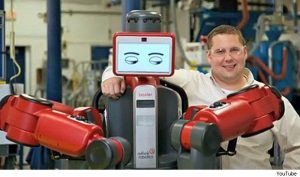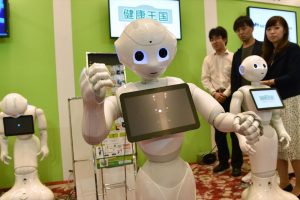In recent years, the rapid advancement of robotics technology has sparked significant debate about its impact on employment. As robots become increasingly capable of performing tasks traditionally carried out by humans, questions arise about the future of work, job displacement, and the potential for new opportunities within the labor market. This article aims to provide an informative overview of the multifaceted effects of robotics on employment, drawing on key trends and insights.
Automation and Job Displacement

One of the most frequently discussed aspects of robotics is the potential for job displacement. Automation, powered by sophisticated robots, has already begun to replace human labor in various sectors. Manufacturing is a prime example where robots have taken over repetitive and physically demanding tasks. This shift has led to concerns about job losses, particularly for low-skilled workers.
A study by the McKinsey Global Institute estimates that up to 800 million jobs could be displaced by automation by 2030. However, it is essential to note that job displacement does not necessarily equate to a net loss of employment. Historically, technological advancements have led to the creation of new jobs and industries. The key challenge lies in managing the transition and ensuring that workers have the skills needed to thrive in an automated world.
Job Creation and Transformation
While automation can lead to job displacement, it also has the potential to create new employment opportunities. The development, maintenance, and programming of robots require a highly skilled workforce. Jobs in robotics engineering, software development, and data analysis are in high demand, and these roles are expected to grow as the technology continues to evolve.
Moreover, robots can take over mundane and hazardous tasks, allowing human workers to focus on more complex and creative activities. This shift can lead to job transformation rather than outright displacement. For example, in the healthcare sector, robots can assist with routine procedures and administrative tasks, enabling healthcare professionals to devote more time to patient care and advanced medical procedures.
The Role of Education and Training
The impact of robotics on employment underscores the importance of education and training. As the demand for new skills rises, workers must be equipped with the knowledge and abilities required to succeed in a technology-driven labor market. This necessitates a shift in educational priorities, with a greater emphasis on STEM (Science, Technology, Engineering, and Mathematics) subjects, coding, and digital literacy.
Furthermore, lifelong learning and continuous professional development will become increasingly important. Governments, educational institutions, and businesses must collaborate to provide accessible and relevant training programs that enable workers to adapt to changing job requirements. Upskilling and reskilling initiatives will be crucial in mitigating the negative effects of job displacement and ensuring a smooth transition to new employment opportunities.
Economic and Social Implications
The widespread adoption of robotics has significant economic and social implications. On the economic front, increased automation can lead to higher productivity and efficiency, boosting overall economic growth. Companies that integrate robotics into their operations can reduce costs, improve quality, and enhance competitiveness.
However, these benefits must be balanced against potential social challenges. Job displacement can lead to income inequality and social unrest if not properly managed. Policymakers must consider measures such as social safety nets, income support, and job transition programs to support workers affected by automation. Additionally, fostering an inclusive approach to technological development can help ensure that the benefits of robotics are shared broadly across society.
Sector-Specific Impacts
The impact of robotics on employment varies across different sectors. In manufacturing, robots have already revolutionized production processes, leading to significant changes in the workforce composition. In agriculture, robots are being used for tasks such as planting, harvesting, and monitoring crop health, which can alleviate labor shortages and improve efficiency.
The retail sector is also experiencing transformation through automation. Self-checkout systems, inventory management robots, and automated warehouses are becoming more common, changing the nature of retail jobs. While some roles may be displaced, new opportunities in logistics, customer service, and technology management are emerging.
In the service industry, robots are being deployed in roles ranging from hotel concierges to restaurant servers. While this can enhance customer experience and operational efficiency, it also raises questions about the future of service jobs and the need for human interaction in certain contexts.
The Future of Work

As robotics technology continues to advance, the future of work will be shaped by a combination of automation and human ingenuity. The key to navigating this transition lies in embracing change and fostering a collaborative approach between humans and robots. Rather than viewing robots as competitors, they should be seen as tools that can augment human capabilities and drive innovation.
The concept of “cobots” or collaborative robots highlights this potential. Cobots are designed to work alongside humans, assisting with tasks that require precision, strength, or repetitive action. By leveraging the strengths of both humans and robots, businesses can create more dynamic and efficient work environments.
Conclusion
The impact of robotics on employment is a complex and multifaceted issue. While automation poses challenges in terms of job displacement, it also offers opportunities for job creation, transformation, and economic growth. The key to harnessing the benefits of robotics lies in proactive measures such as education, training, and inclusive policy-making.
As we move forward, it is essential to adopt a balanced perspective that recognizes both the potential and challenges of robotics. By preparing the workforce for the future and fostering a collaborative approach, we can ensure that the integration of robots into the labor market leads to a more productive, innovative, and inclusive economy.










